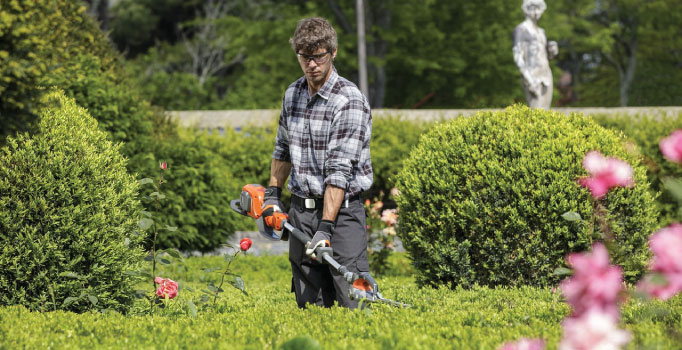 |
| Hedge trimmers, pruning shears, lawn mowers, rakes … the list of lawn and garden tools can be a yard long (pun intended!). But sometimes, it’s often the smaller, less noticeable accessories that make the most difference. |
| Here are five must-have accessories that can make gardening and lawn care more comfortable, efficient, and maybe a bit more satisfying.
|
| 1. Hedge Trimmer Catcher Plate |
| Do you have a hedge trimmer handy for easily trimming shrubs? That’s great –– but the aftermath of your work can prove to be a mess. Clippings are strewn everywhere, and picking them up is a pain. You may not have it on your radar, but a hedge trimmer catcher plate can be really helpful in this kind of situation and save you from the tedious cleanup. |
| The catcher plate is fixed to the blade of the hedge trimmer and collects most of your trimmings as you go. Once you’re done shaping your hedges, you can simply empty the catcher into your compost or waste bin. It’s a little addition to your tool, but it certainly saves you loads of time and spares you any unwanted backache. |
| 2. Garden Kneeler Seat |
| Speaking of backaches… The constant kneeling to plant those tulip bulbs or get rid of those weeds can take its toll on your back and knees. A garden kneeler seat can really make a difference. It provides comfort and ease for those who need to bend down often during their gardening chores. |
| Flip it over, and it doubles as a seat for when you want to rest, do tasks that require you to be seated, or when you just want to savor a cold one after a hard day’s work. Some models also come with pockets on the side for tools. |
| 3. Outdoor Insect Traps |
| Who said it's just the weeds you have to combat while gardening? Certain insects, besides being irritating and pesky little distractions, can also potentially harm your plants and flowers. While you can go ahead and buy some pesticides and bug sprays at the nearest big box store, these can often harm your plants and are dangerously toxic. |
| While there are numerous natural mosquito predators in your lawn, like spiders, bats, dragonflies, and certain bird species, sometimes they need a little help. |
| Outdoor insect traps can be extremely beneficia. These devices draw insects away from you and your plants, trapping them in a container where they can be disposed of later. Some models are selective and eco-friendly and don’t affect any beneficial insects like pollinators, only the harmful ones like mosquitoes, aphids, and beetles. |
| 4. Extension Handle for Tools |
| While long-handled tools like rakes and hoes can save you from bending too much, there’s always some corner or spot that’s just out of reach. An extension handle for your tools ensures that you don’t have to take any leaps of faith or risky stretches while tending to your garden. |
| Extension handles are easily attachable and adjustable, and they can add the extra length you need to comfortably reach any area of your garden, whether it’s a high tree branch or a far corner of the flower bed. They come in different sizes with different grips, and can be attached to almost any gardening tool. |
| 5. Pop-Up Garden Bin |
| This accessory sounds fun, right? It’s also incredibly helpful. A pop-up garden bin is a freestanding container that does exactly what it says: It pops up when you need it. Once you’ve finished pruning your roses or clearing up that pile of leaves, rather than leaving everything in a heap to be cleared later, simply toss the debris into the bin as you work. |
| Pop-up garden bins are generally lightweight and have easy-to-carry handles, so moving them around as needed won’t be an issue. Once your gardening session is done, they can easily be folded and stored away neatly until next time, saving a good amount of space in your shed.
|
| Accessorize to Maximize |
| While we don’t need all these accessories to carry out our garden work, they can certainly make some things easier, more efficient, and just maybe a bit more fun. And that isn’t a bad thing. |
| Your toolkit might be complete with all the big ticket items like lawn mowers, trimmers, and shears, but it’s the smaller additions that bring the biggest changes. Investing in some accessories isn’t really about making your lawn care sessions less of a chore. It’s also about taking care of yourself as well. |